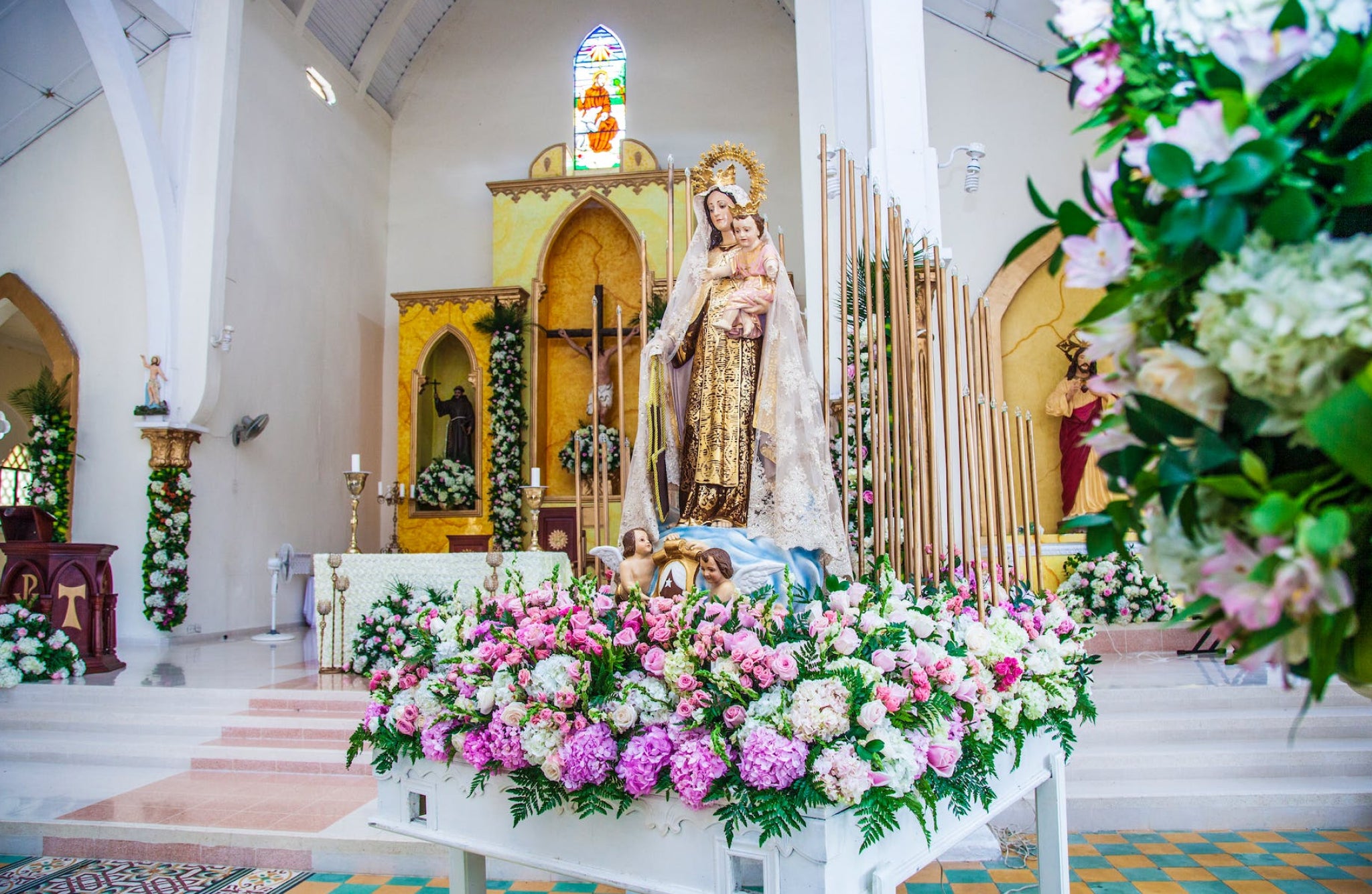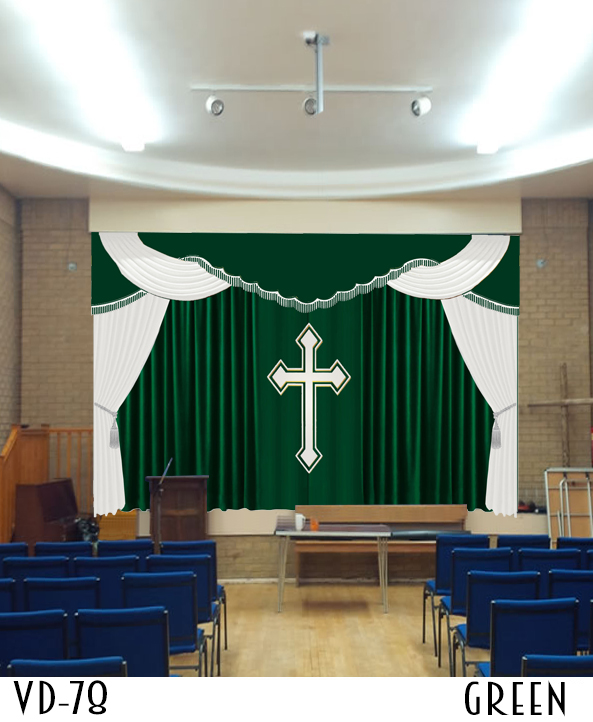Decorating a church altar is an important aspect of worship and community life. It sets the tone for the congregation and fosters a sacred atmosphere. One of the most impactful and versatile ways to adorn an altar is through the use of cloth. This article will delve into various aspects of altar cloth decoration, including types of fabrics, color symbolism, seasonal decor, and personal experiences that highlight the transformative power of thoughtful design.
Understanding the Importance of Altar Decoration
The altar serves as the focal point of a church, symbolizing the connection between the divine and the congregation. A well-decorated altar resonates with spirituality and beauty. From traditional to contemporary designs, altar decoration reflects the values and beliefs of the community.
The Role of Cloth in Altar Decoration
Cloth has been a traditional element in altar decoration for centuries. It plays a significant role in emphasizing the sacredness of the space, adding texture, color, and warmth. The choice of fabric can enhance the church’s aesthetic and evoke specific emotions during services.
Choosing the Right Fabric for Your Altar
When selecting fabric for altar decoration, consider the following factors:
1. Durability
Altar cloths are often used for long periods and need to withstand wear and tear. Opt for durable fabrics such as:

- Cotton: Breathable and easy to clean.
- Polyester: Resistant to wrinkles and fading.
- Silk: Luxurious but requires more care.
2. Color and Symbolism
Different colors hold significant meanings in a church context. Here are some common color choices and their interpretations:

| Color | Symbolism |
|---|---|
| White | Purity, celebration, and joy |
| Green | Growth, renewal, and hope |
| Purple | Repentance, royalty, and spiritual reflection |
| Red | Passion, sacrifice, and the Holy Spirit |
| Blue | Heaven, peace, and divinity |
3. Texture and Aesthetic Appeal
Cloth texture adds depth to the decoration. Consider using:

- Velvet: Soft and rich, perfect for formal occasions.
- Linen: Simple and elegant, ideal for a rustic look.
- Organza: Sheer and lightweight, great for layering.
Seasonal Altar Decoration Ideas
Incorporating seasonal themes into altar decoration can enhance the worship experience. Here are some ideas for different times of the year:

1. Advent and Christmas
Use deep greens and rich reds, with accents like gold or silver to signify the festive mood. A beautiful velvet altar cloth paired with natural elements like pinecones and candles can create a warm, inviting atmosphere.
2. Lent and Easter
Purple cloths can signify penitence during Lent, while bright whites and yellows can celebrate Easter. Consider adding floral arrangements with lilies or tulips to symbolize new life.

3. Pentecost
Red and orange fabrics can represent the fire of the Holy Spirit. Using layers of different textures can add a dynamic element to this celebration.
4. Ordinary Time
Use green altar cloths to symbolize growth. Incorporate natural elements like greenery or simple floral displays to keep the decor fresh and relevant.

Designing Your Altar with Cloth: Tips and Techniques
Creating a visually appealing altar requires careful thought and planning. Here are some practical tips:
1. Layering Fabrics for Depth
Layering different fabrics can add richness to the design. For instance, a base of linen topped with sheer organza can create an ethereal effect.

2. Using Color Blocking
Color blocking—combining bold colors to create a striking visual—can make your altar stand out. Consider contrasting colors that align with the church’s theme or the liturgical calendar.
3. Incorporating Natural Elements
Combining cloth with natural elements, like flowers, branches, or stones, can enhance the overall aesthetic. This approach reminds congregants of the connection between creation and worship.
Comparative Analysis: Buying Pre-made vs. DIY Altar Cloths
When it comes to altar cloths, you have the option of buying pre-made designs or crafting your own. Here’s a comparison of both approaches:
| Criteria | Pre-made Altar Cloths | DIY Altar Cloths |
|---|---|---|
| Cost | Higher initial investment | More cost-effective if you have materials |
| Time | Quick and ready to use | Time-consuming depending on the complexity |
| Customization | Limited options available | Completely customizable to your vision |
| Quality | Professionally made with quality materials | Varies based on skills and materials |
Personal Experience: My Journey with Altar Decoration
As someone who has been involved in altar decoration for several years, I have witnessed firsthand the profound impact that thoughtful design can have on a congregation. I remember the first time I draped a simple white cloth over our altar for Easter. The transformation was immediate; it exuded purity and joy, and congregants remarked on how the decor enhanced their worship experience.
Over the years, I have experimented with various fabrics, colors, and arrangements. One particularly memorable moment was during a harvest celebration when we used a backdrop of burlap and decorated the altar with seasonal fruits. It created a warm, inviting space that resonated with our theme of gratitude.
Maintaining Your Altar Cloths
Proper care of altar cloths is essential to preserve their appearance and longevity. Here are some maintenance tips:
1. Regular Cleaning
Dust and dirt can accumulate on altar cloths. Regularly vacuum or shake them out, and consult the care label for washing instructions.
2. Repair and Restoration
Over time, wear and tear can occur. Consider repairing minor damages or consulting a professional for restoration to keep the cloths looking pristine.
3. Seasonal Rotation
Rotate cloths seasonally to reduce wear. This practice not only maintains the appearance but also keeps the altar decor fresh and relevant.
FAQs About Church Altar Decoration with Cloth
1. What types of fabric are best for altar cloths?
The best types of fabric for altar cloths include cotton, polyester, silk, velvet, and linen. Each fabric offers unique benefits in terms of durability and aesthetic appeal.
2. How often should altar cloths be changed?
Altar cloths should be changed according to the liturgical calendar—typically for each season or significant church event. Regular cleaning should also be part of maintenance.
3. Can I use my own designs for altar cloths?
Absolutely! Custom designs allow for personalization that resonates with your congregation’s values and aesthetics. Consider DIY options or working with local artisans.
4. What colors are appropriate for different seasons?
Common seasonal colors include purple for Lent, white for Easter, red for Pentecost, green for Ordinary Time, and blue for Advent. Each color has symbolic significance.
5. Is it expensive to decorate an altar with cloth?
Costs can vary widely based on fabric choice and design complexity. DIY options can be more budget-friendly, while pre-made items may require a higher investment.
Conclusion
Decorating a church altar with cloth is an enriching opportunity to enhance worship and community spirit. By thoughtfully choosing fabrics, colors, and designs, you can create a beautiful focal point that resonates with your congregation. Whether you choose to buy pre-made altar cloths or embark on a DIY project, the effort put into altar decoration certainly pays off in spiritual fulfillment and aesthetic delight.
By sharing personal experiences and practical tips, I hope this guide helps you in your altar decoration journey, encouraging creativity and community involvement. Remember, the true essence of altar decoration lies in its ability to foster a deeper connection with the divine and promote a sense of belonging within the congregation.